It is widely assumed that shoulder-fired guns have reached a state of mechanical perfection and that no new great advances are left to discover. Whether you look at the question in terms of ballistic energy on target, perfect cycling of the next round, flawless aiming, or perfect fire control, two things remain unchanged: Recoil and its effect on the human-looking through the sights.
I found out early on in life that I love things that shake and go bang. When I was younger I ran dirt bikes, and the control those machines had at 70 miles an hour across rough terrain always amazed me. That amazement was so powerful that it led me to a Ph.D. in mechanical engineering at the age of 26, and has led to a lifetime of building stuff that shakes and goes bang; like guns, for example.
So when I talk about the science of recoil, I have interesting things to say.
The name of the science of shake and bang is Dynamics. How Dynamics applies to a machine as old as Christopher Columbus is very important, especially to you, dear reader, if you intend to master comfort and confidence when shooting guns.
I want to describe a slow-motion video for you to play in your head as you read this: Imagine the bullet in the bore of the gun sitting in front of a slug of gun powder. Behind the powder is a primer cap, and behind it is a firing pin with a spring that is held back by a trigger. Your finger is on that trigger and your brain commands nerve impulses to set off the motion once you decide that your eye is perfectly in line through the sights on the barrel with the target. OK so far?
Sounds simple, but thinking in slow motion allows you to appreciate all of the things that can screw up your shot before the bullet hits the center of the bull’s eye. When your nerve cells talk down the line from your brain to your finger, it takes about 1/5th of a second for the muscle to actually move, but the trigger releasing the firing pin might only take 1/5000th of a second for it to hit the primer. In another 1/1000th of a second, the friction in the primer cap sets off a chain reaction in the powder. Your eye typically doesn’t see discrete occurrences shorter than 1/14th of a second, but 1/2000th of a second later, the pressure behind the bullet builds enough for it to start moving down the barrel. The force is so great it accelerates to bullet speed in only 1/1000th of a second.
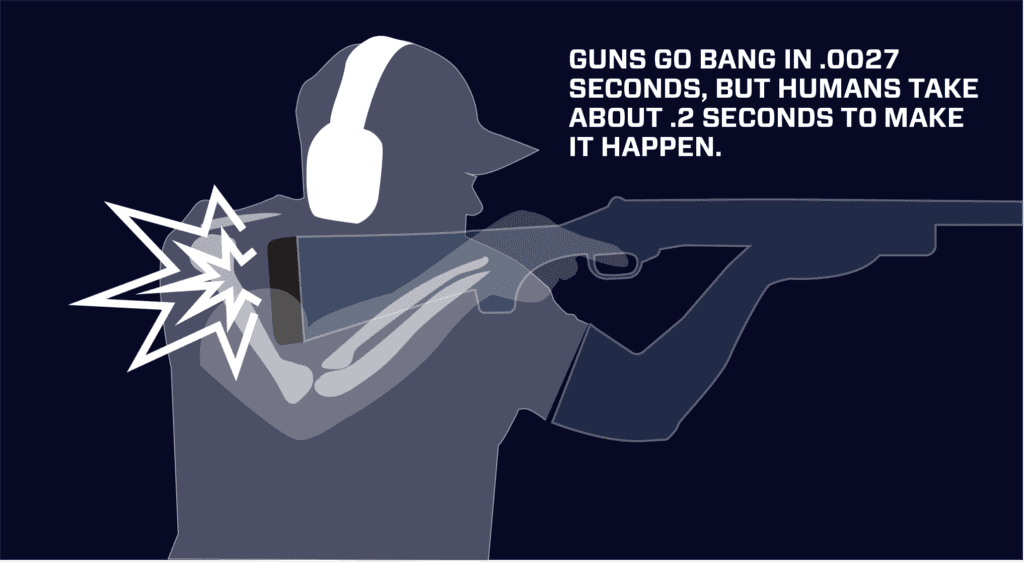
Add it all up and it looks like this:
- Guns go bang in .0027 seconds, but humans take about .2 seconds to make it happen.
- Include also the .1 second blink, the .2 second flinch, the .07 ocular refresh rate, and the swing of the barrel while it pans across the target from poor breathing control, and it’s a wonder you can even put a hole in the side of the barn…
- In other words, the gun goes bang about 200 times faster than it takes you to aim, make up your mind, and actually pull the trigger.
- Once the bullet moves, the gun does too, but in the other direction. That is recoil.
If you’re going to shoot with more comfort and confidence, you need to consider all aspects of the system. Here is a comprehensive description of how each characteristic affects comfort and confidence. They are separated into two groups; those that are characteristics of the gun’s behavior, and those which are caused by the human behind the sights.
Gun-borne variables
The mass of the gun
The heavier the ratio of the weight of the gun to the bullet, the less acceleration the gun will have. Lighter guns kick more. The Conservation of Momentum only involves the bullet and gun whereas the Conservation of Energy must include the gas expansion as well. The kickback velocity varies linearly with the gun weight but the kickback energy varies with the square of the gun weight. As a result, a gun that weighs half as much will kick 4 times more!
“A gun that weighs half as much will kick 4 times more!”
The mass of the bullet
Heavier bullets kick more but because the muzzle velocity is lower, the heavier bullet offsets the effective energy increase. So the ratio of the mass of the gun to a light or heavy bullet doesn’t change the recoil as much as a lighter gun.
The type of action
There are two categories of gun action: closed breech and actuated.
Closed breech guns, like break action and pump-action shotguns and lever or bolt action rifles, do not open until well after the bullet is gone and the gas pressure equalizes. Because of that, all of the gasses leaving the barrel after the bullet cause some recoil. In fact, 60% of closed-breech gun recoil comes from the bullet acceleration, and 40% of the recoil comes from the gas-and-burned-bits-of-gunpowder accelerating out of the muzzle, called ejecta.
Actuated breech guns may use some of the gas pressure, bled from a point a ways down the barrel, and use it to work a piston pushing on the breech actuation. By redirecting some of the energy to move the breechblock backwards, the vector of thrust generated by accelerating the breechblock away from you reduces the total recoil by that amount. Some others schemes of varying effectiveness include letting the recoil move the gun backwards while the breech block stays still thereby cycling the action as in inertia driven actuation. Others have rotating breech locks or slip-strike mechanisms that hold the breech locked while the pressure is highest, and allow the breech block to be pushed backwards by the blowback pressure to cycle the action.
The take away is that actuated breech guns recoil less than closed breech guns, all else being equal.
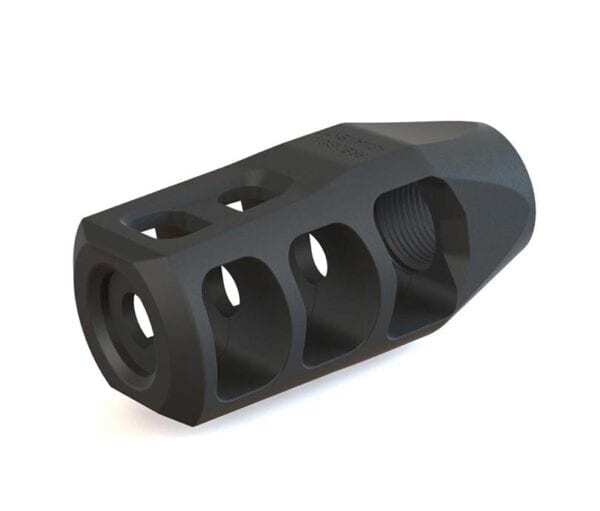 Muzzle porting or muzzle brakes
Muzzle porting or muzzle brakes
Some shotguns have muzzle porting, where holes in the barrel drilled pointing upwards near the muzzle eject gas and push against muzzle rise. These carefully formed holes produce a balancing force that holds the barrel from rising and allows flat follow-through of the muzzle in order to permit better control in clays or skeet shooting. They are generally tuned for one load/charge combination.
Muzzle brakes are principally used to reduce recoil on rifles. A series of holes are provided in a screw-on attachment on the end of the barrel which redirects the high-pressure gas behind the bullet towards the shooter. It sounds brutal, and it is. The surfaces of the holes which the gasses push against cause a force vector that subtracts a substantial amount of recoil from the shooter. Although they may reduce recoil by 40% or so, the noise signature of the shock wave directed towards the shooter makes muzzle brakes categorically dangerous to human hearing, and hearing protection mandatory.
A muzzle brake adds weight to the outer end of the muzzle, increasing the polar inertia of panning the muzzle. Further, the muzzle brake lengthens the barrel, and unless it was manufactured with mounting threads, the barrel is required to be materially altered.
Chokes
Chokes are a controlled reduction in diameter of the end portion of shotgun barrels. Chokes modify the shape of the expansion of buckshot rounds by constricting them as they exit the barrel. Some are machined directly into the barrel, as others are interchangeable sleeves which can be field-changed in order to match the shot pattern with the target distance. The change in recoil from open bore to full choke is marginal.
Gunstock geometry
The angle between the bore and the main contact point of the stock to the shoulder is called the stock drop angle. The drop angle affects the position of the shooter’s eye line of sight along the barrel. While rifles and shotguns with a higher drop angle seem more comfortable to aim, they produce a higher muzzle rise than straighter stock drop angles. Taken to the extreme, tactical weapons have a zero drop angle where the bore is directly in line with the center of the butt plate, and a sight rail is added to the top of the receiver to raise the sightline to a comfortable position. While a high drop angle does not directly affect the recoil energy, it does change the control by introducing more muzzle rise.
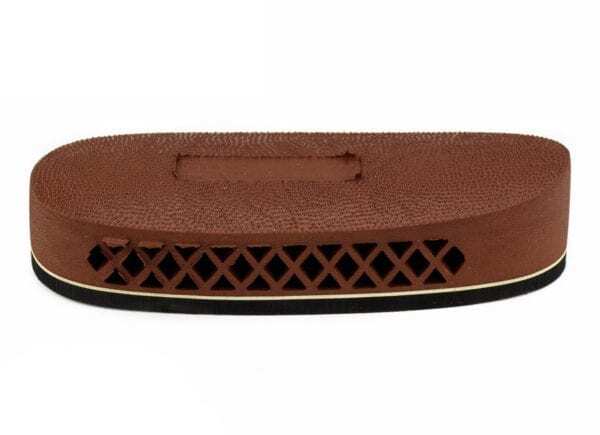 Butt plate pads
Butt plate pads
Many recoil-reducing strategies have been attempted with varying degrees of success. OEM or aftermarket pads can be had which provide a soft rubber or foam volume on the end of the stock. This provides a spring distance which permits the recoiling gun time to decelerate. The exchange of time for force reduces the peak force transmitted to the shooter. Although rubber-only pads reduce peak force, they do not remove any energy. Think of them as springs. Once they are wound up, they eventually will give back that energy. Typical recoil impulse transfers with hard plates occur in 4 to 5 milliseconds, whereas soft foam pads extend the time into the range of 10-12 milliseconds.
Moving mass recoil-reducing devices
Mercury filled buffer tubes reduce the energy transmitted to the human by causing some of the energy to be converted to heat within the mechanism. A tube mounted usually within the stock with baffles inside is partly filled with mercury. Owing to its high density and fluidity, when recoil moves the gun, the mercury’s inertia causes it to stay put as the tube and baffles move past it. This causes friction to occur in the buffer and reduce that which is absorbed in the human.
Spring pads
Another method used in reducing the peak force transmitted to the shooter is to use a spring breakaway between you and the gun. In this scheme, a spring between two plates is guided by several rods to permit the butt pad and the gun to approach each other during recoil. While this method reduces peak force and the perception of recoil relief, it does not remove energy but rather delays the transfer to the shooter. Variants incorporate a piston-and-orifice shock absorber which does, but at great cost, mechanical complexity and the usual requirement to modify heavily the stock to accept the mechanism.
The energy available in the gunpowder
The energy of the gunpowder’s combustion gets used up several different ways:
- Some of the energy of the expanding gasses is converted to mechanical energy in the bullet’s mass times its velocity.
- Another place some of the energy goes is in the hot gasses expanding after the bullet leaves the barrel.
- Yet more energy is left in powder burning after the bullet leaves the barrel.-Some of the energy heats the barrel up.
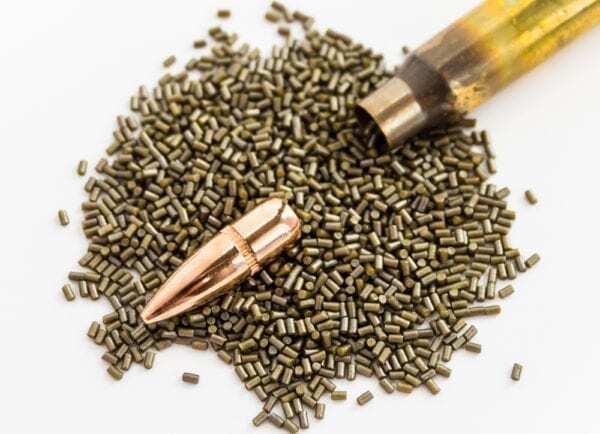 The burning rate of the propellant
The burning rate of the propellant
Depending on the burning rate of the powder and the length of the barrel, mismatched cartridge/barrel length combinations can make a great big fireball because the powder does not have enough time to burn before the bullet leaves the barrel. Think of a snub nose revolver and you get the picture. On the other hand, black powder is more pressure-sensitive to burning rate, and the effect is more like a slow explosion. Black powder tends to have a higher initial breech pressure and a quicker pressure drop as the bullet in the barrel. Smokeless powder can be manufactured with different burning rates in order to cause a lower breech pressure, but sustain it at a constant during more of the bullet’s travel down the barrel length. Well-matched cartridges give the maximum power to the projectile.
Breech pressure
The inertia of a heavy bullet will cause a higher pressure to build up behind the bullet. Larger bores have more area on the back of the projectile for the expanding gasses to push against, so will tend to have lower breech pressures. Regardless of the breech pressure, recoil will be the same given the same muzzle energy in the projectile, the powder burning rate and the length of the barrel.
Higher breech pressure caliber/cartridge combinations tend to wear out barrels faster. Over pressurizing a barrel will cause a pig-in-the-python bulge, or blow it up in your face.
On rifles, the breech pressure can go upwards of 60,000 psi, whereas shotguns field loads generally are below 15,000 psi, and heavy loads rarely exceed 18,000 psi.
Length of the barrel
To get all of the burning powder’s energy into the bullet, it would be ridiculous to permit the expanding gasses to reach atmospheric pressure and temperature just as the bullet leaves the barrel. The barrel would be miles long. By balancing the length of the barrel, the bore size, the projectile weight and the burning rate of the powder charge, a reasonable compromise can be reached where the majority of the combustion energy is transferred to the projectile with a practical barrel length. Very short barrels can be practically as efficient as long ones in transferring the energy to the projectile. Short barrels have less discrimination in aiming, but that can be overcome with good optics. The minimum barrel length in rifles is about 10-12” for suppression fire type spray-and-pray type weapons; 16” barrels or longer are generally used for ringing the gong at a 1000 yards. 30” or more and you’re just showing off… Shorter barrels make a bit more noise but don’t affect recoil much.
Ballistic energy as measured at the muzzle
The mass of the bullet times the velocity as measured as it leaves the muzzle to dictate the entire ballistic energy carried by the projectile. The muzzle energy of the bullet plus the ejecta energy constitutes the entire recoil energy input.
Takeaway: Ballistic energy plus Ejecta energy equals recoil energy.
Type of projectile
Solid projectiles produce exactly the same recoil as buckshot projectiles, provided that the weight and muzzle velocity is the same.
Bore diameter
The bore diameter affects the active area on the back of the projectile which the burning gasses push against. Rifled bore shotguns are surprisingly accurate when shooting sabot slugs. Sabots are a cradle that holds a small diameter projectile in the larger bore. The large bore gives a big advantage to the pressure, and the small-diameter projectile housed within the sabot has an efficient flight at medium distances.
Gun recoil velocity
Gun recoil velocities less than 10 feet per second (FPS) are generally tolerated universally well by all shooters, including youth. Anything over 12 FPS causes anyone to pay attention, and anything over 18 FPS generally has the potential for injury, including bruising, flinch conditioning, scope-and-head collisions, concussions, etc. High recoil velocities can be tamed by energy reducing systems.
Recoil Energy
The measure of recoil energy is derived from the mass and velocity of the bullet and the ejecta acting against the mass of the gun. The energy transferred to the shooter through the impulse is measured in foot-pounds of energy.
Joules if you think metric.
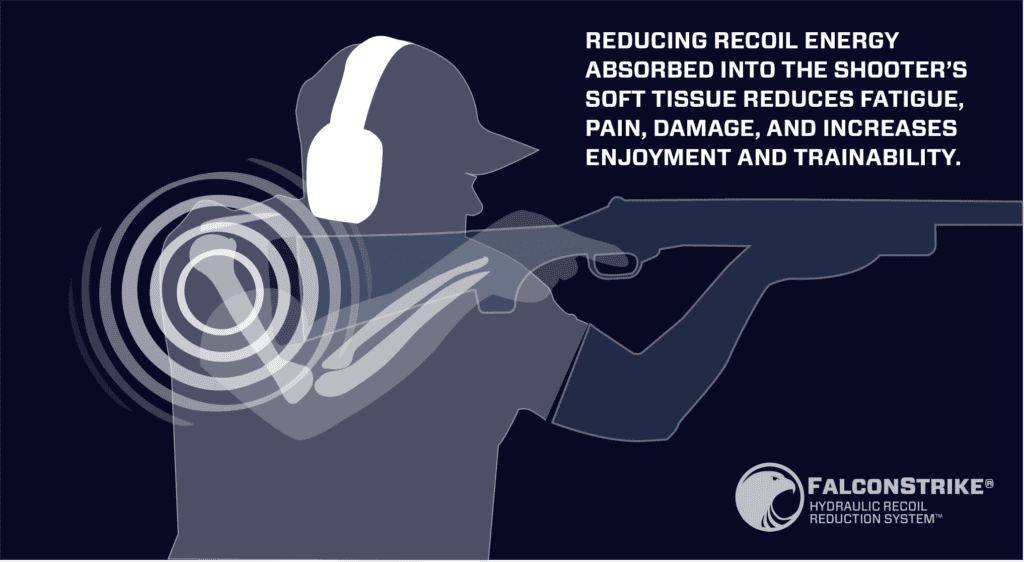
Recoil energy transmitted to the shooter through the recoil impulse
There are a host of events that take place as the recoil of the gun advances towards the shooter. First, humans behave like a bucket of juice when you whack them with a stick at 18 feet per second. Think of the slow-motion film of an arrow hitting a bedsheet. The concentric circles increase from the point of impact outwards until the arrow’s energy is used up and the arrow and sheet move as one. The human’s flesh does exactly the same. As the concentric circles expand, more mass becomes involved in the impulse transfer. A point of balance is achieved where the entire mass in play achieves the same velocity. The molecular friction of the shock wave as it propagates through the human is the principal way the energy is absorbed; it is also the principal way your brain hears about the bang when all of your nerves talk to your brain at once.
Reducing recoil energy absorbed into the shooter’s soft tissue reduces fatigue, pain, damage, and increases enjoyment and trainability.
Traditional recoil pad pressure distribution
Hard butt plates push hardest against the first thing they touch; the collar bone, rotator cuff cartilage, tendons, etc. The soft tissue will eventually get energy transferred to them as the hard bits get shoved backwards.
Rubber-only foam pads tend to collapse somewhat and reduce the peak force on the hard bits in your shoulder, but still have a high force gradient between the hard bits and the soft tissue.
Gel pads are somewhat better than rubber-only pads but behave rather hard at high recoil velocities. Think of a belly flop in mud if your parachute doesn’t open…
Fluid-filled recoil-reducing pads have the ability to adjust to the shape of the shooter’s anatomy and push evenly on the top of the bumps as well as the bottom of the holes in your shoulder due to hydraulic force equalization.
Traditional recoil pad contact area
The contact area of a hard butt plate is dictated by how much the human wraps itself around the gun upon recoil. Rubber only foam pads tend to collapse in length only, and therefore do not increase the contact area appreciably.
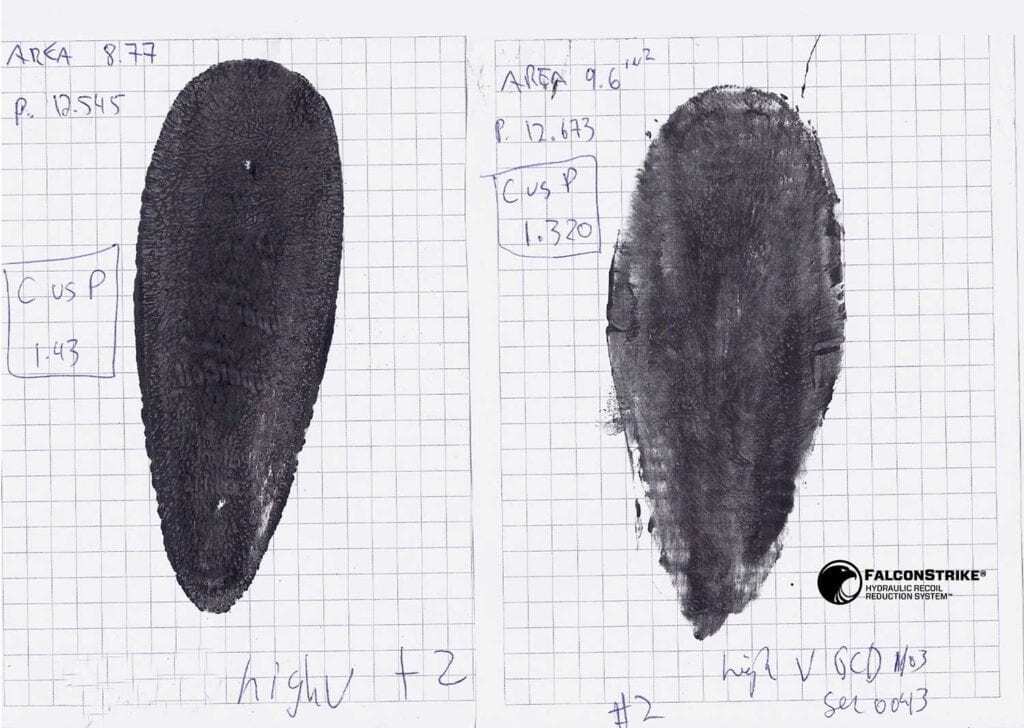
FalconStrike Hydraulic Recoil reducing system behavior
A new type of hydraulic recoil-reducing device has been developed which provides many improvements to the transfer of the recoil impulse and provides the single largest increase in comfort and confidence of any additive recoil-reducing accessory.
Three modes of operation are present in the standard 1-3/16” length-of-pull recoil pad.
First, the fluid-filled bladder acts like a whippletree evener on a horse hitch. The fluid flows to push evenly on the entire contact area; it pushes the same amount on the collar bone as it does on the hollows beside it. The best rubber-only pads provide a 15/70/15 force distribution above, on, and below the collar bone. The FalconStrike has a 26/42/32 force distribution for maximum impulse transfer comfort and confidence.
Secondly, the hydraulic bladder expands sideways by 12% as the shock wave transfers from the gun to the human. This increased contact area further reduces the point loading on any part of the shoulder, thereby increasing shooting stamina and reducing bruising or pain.
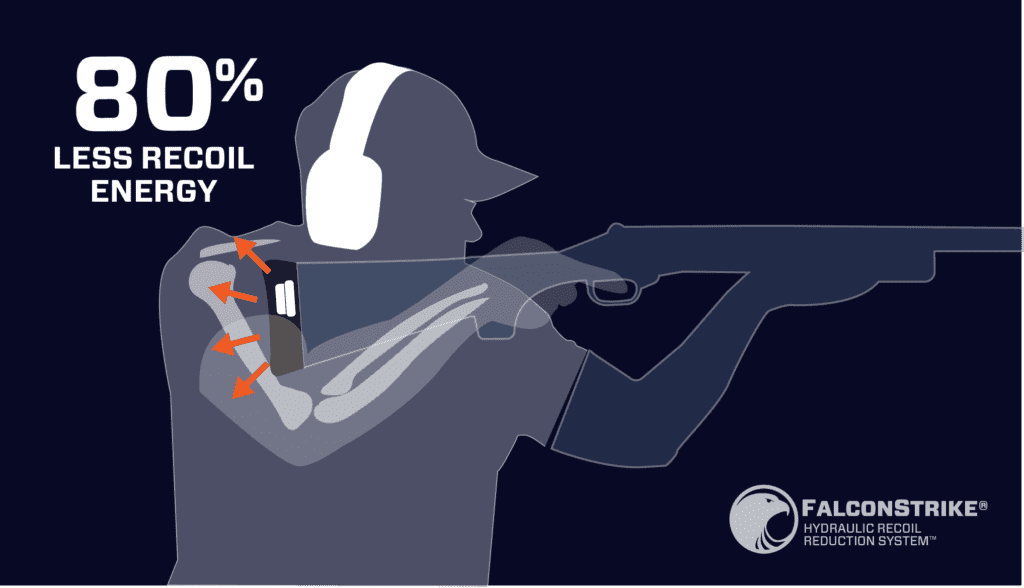
Third and most importantly, the patented shock absorber contained within the FalconStrike recoil reducing system removes 35% of the total recoil energy before it reaches the shooter. That is a decrease equal to or better than adding a muzzle brake, going to a semi-automatic, or shooting 2 calibers smaller.
Think of it this way; The 5 chrome balls in Newton’s cradle that ping back and forth do so because most all of the energy is transmitted through each ball. If you lift one up and drop it, one leaves the other end of the stack. Now imagine the center ball being a boiled egg. The energy would squish the egg and the last ball would not lift nearly as much. By the same analogy, instead of the recoil energy being distributed into the human directly by the gun, there is now a third player in the chain of events where the FalconStrike recoil-reducing shock absorber eliminates 80% of the energy before reaching the shooter.
Said another way, FalconStrike works so well because now instead of the gun accelerating you, it squishes the shock absorber and you get 35% less recoil energy distributed into your body.
That amount of recoil reduction can be added to any platform, in addition to a muzzle brake or barrel venting.
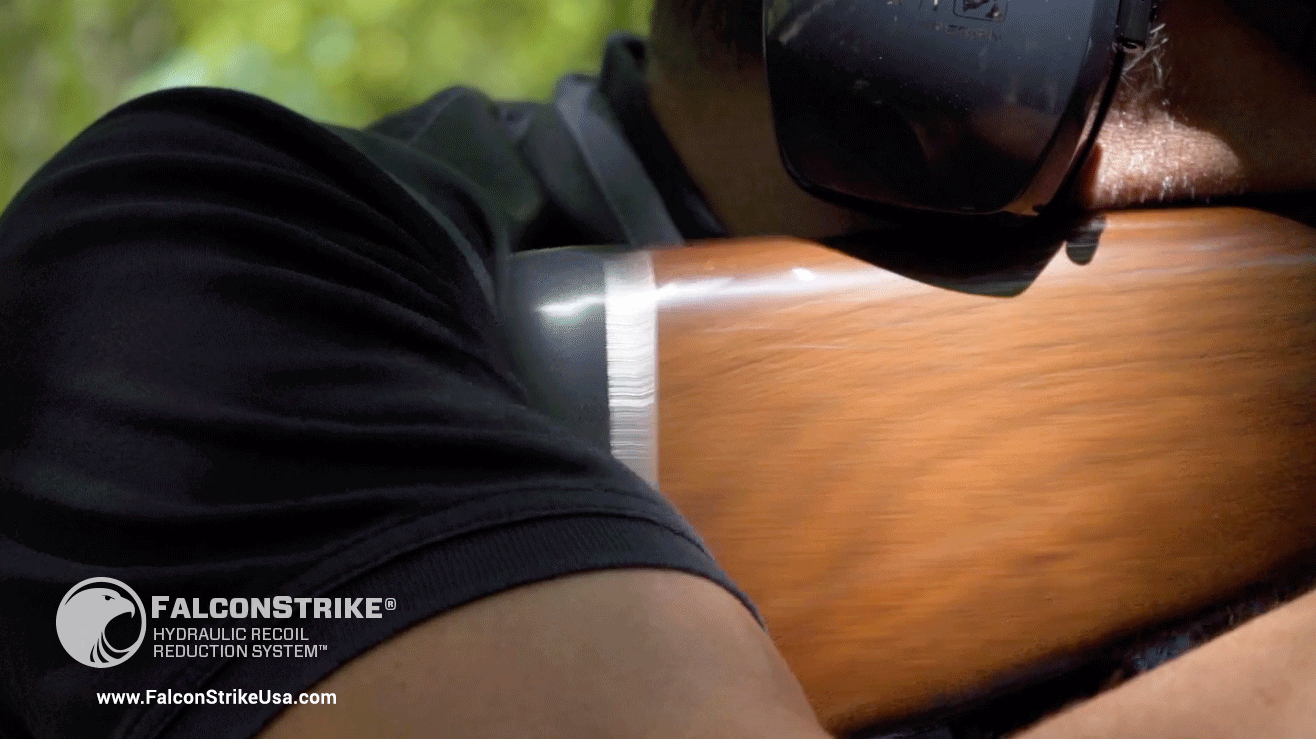 Human-induced variables
Human-induced variables
Cone of probability
The cone of probability describes the range of deviation of the projectile flight path from the point of aim. The true value is the sum of all the gun-borne and human-induced variables. The cone of probability is included in the human-induced variable category because the majority of poor accuracy is the fault of the monkey holding the gun. Guns shoot straight. Humans don’t.
Fast and slow-twitch muscle movements
Humans have two types of muscle control: Fast and slow twitch.
- Fast-twitch muscle movements pull your hand out of the fire. The command initiates from the stem of your brain, and the ability to plan and coordinate fine movements is not possible.
- Slow-twitch muscle movements allow you to walk all day. Those muscles are commanded from slower but deliberate position control and are used in things like brain surgery, for example.
Generally, if you use the fast-twitch muscles to hold or fire the gun, the erratic motion generated is too fast for your eyes to appreciate, so the gun goes bang when the sightline is pointing in a larger cone of probability, rather than dead on target.
Don’t hold the gun too tightly; the twitching increases the cone of probability a lot.
Ocular refresh rate
The human ocular refresh rate is the shortest time the human eye can distinguish between two separate images flashed in rapid succession. Humans generally can’t see things faster than 1/14th of a second. It sounds crazy, but your brain has learned to ignore the time your eyes are closed when you blink. The world plays in a continuous movie in your head, but you only see chunks of it, and your brain stitches all the pictures together to make you think it is continuous. That is a problem if you are straining to brace the gun because the rapid twitch muscle movement makes the sightline flutter, but your brain sees the sight picture dead steady. You move the gun a lot more than you can see. Figure out how to increase the steadiness of the gun.
Human muscular control feedback time lag
The recoil input event is over in 15 milliseconds or less, but it generally takes 250 milliseconds for the human to perceive the shock and produce a muscular counter-action. Even the fastest athletes have a reaction time in the range of 200 milliseconds. The gun goes bang a lot faster than your head does. Nothing you think you’re doing during the recoil event can improve accuracy; I’m sorry to inform you, but you are just plain too slow!
Sensory input stun point
The sensory input stun point is a rate of recoil energy which causes so much molecular friction and sensory nerve inputs into the shooter that they revert to singularly respond to that input stimulus only; it hurts so much, nothing else matters. Higher recoil signatures like 300 Win-Mag, 7mm Ultra, .338 Lapua, and the like produce over 15-foot pounds of recoil energy approaching the practical limit for any shooter. Even larger caliber platforms like the .50 BMG are categorically dangerous for cumulative physical harm to the shooter. That doesn’t sound like much fun at all…
The low end of the recoil energy input range would include cartridge platforms like .22 rimfire, where the sensory input is so low you are certainly going to run out of bullets before you run out of stamina.
Sighting systems, as the human interprets them
The human eye has two modes of perception. Acute vision focuses the image on the retina, and peripheral vision senses relative changes in position outside of the central focal point. Both these eye characteristics are used differently in the aiming of guns.
If the goal is to align the sighting system with as little parallax error to the aiming point as possible, acute vision is used. Open sights are limited by the judgment of the operator. Optics, which magnify the image, increase the resolution presented to the human eye. Reticle cross hairs superimposed by the optics on the aiming point help to develop a field of context which further increases accuracy.
Open sights come in many variations but generally employ a pin at one end of the barrel and a notch at the other. Repeatable aiming involves practicing to interpret the alignment of the pin in the notch superimposed on the desired point of impact. Another variant of the open sight is the peep sight.
Where the goal is to track flying targets, peripheral vision is crucially important in perceiving the motion of the target and planning the motion of bringing the bead or rib vent rail in line with the anticipated point of impact. In action type shooting, the sighting is more about muscle memory tuning in order to develop a repeatable target leading in anticipation of the point of impact.
Anticipation, (flinch response)
The learned response of anticipating the noise of the shot and the pain of the recoil is called flinching. People develop bad habits in a bid to protect themselves somewhat from the effects of recoil, invariably at the expense of accuracy. A common effect is to close one’s eyes momentarily as the trigger is pulled. The symptom is hidden by the 1/14th second ocular refresh time lag and the ¼ second human reaction time. The blast and recoil are so large as a sensory input that the shooter doesn’t realize they closed their eyes before the shot; closing one’s eyes while aiming invariably leads to an increased cone of probability in the projectile’s direction.
Another common trait of flinching is to hold the gun too tightly or snatch the trigger, which leads to fast-twitch muscle motion and further increasing the cone of probability.
Blinking
The average length of time for a blink is 1/10th of a second. Any change in position of the new perceived point of impact while you blink will be blended by your mind to the previous sight picture. The difference between the perceived and the actual aiming point increases the cone of probability and directly affects accuracy. Blinking and flinching is not the same thing. Be aware of both.
Fear
Shooting firearms is a violent event. The noise and recoil can lead to an involuntary fear reaction that causes involuntary muscle contractions or cognitive disconnects, thus impairing the ability to shoot accurately.
An improperly fitted gun previously learned fear responses from heavy recoil, and poor technique aggravating the fear response all contribute to continued poor performance.
Pain
The learned response to the pain of recoil can degrade the ability to shoot accurately and lead to flinching.
Human mass involved in the impulse transfer
The average human mass analogy at play is 65 pounds in a man shooting from a standing position. The radius of gyration about the center of gravity is in the range of 48 inches. When the gun recoils, the resolution of the rapidly moving gun resolves to produce an inverted pivot that as the gun’s and the human’s velocities equalize, tent to come into the time required to input muscular effort to straighten back up. The rock back distance of a field load 12 gauge shotgun shell or 270 rifle move the average shooter backward around 3 inches before voluntary muscle control takes over and you straighten back up.
The compliance of the human, when subjected to recoil, is amazingly stretchy and looks nothing short of a bowl of Jell-O when viewed with a high-speed camera. Study of the entire recoil impulse progression shows a shockwave propagating concentrically from the gunstock on the shoulder, through the flesh, up to the arm and the neck of the shooter, and ending in the trigger finger and the earlobe of the shooter at about the same time…
Shooting grip technique
Poor technique, especially holding the rifle or shotgun too tightly in an attempt to increase the mass in play and therefore control the pain or fear of recoil causes two opposing sets of muscles to twitch if held too tightly or too long. The instinct to hold on tightly to avoid the fear or the pain of recoil tends to reduce accuracy. Instead, by holding the gun with your voluntary muscles in a controlled but relaxed grip, you will shake less, thereby increasing accuracy.
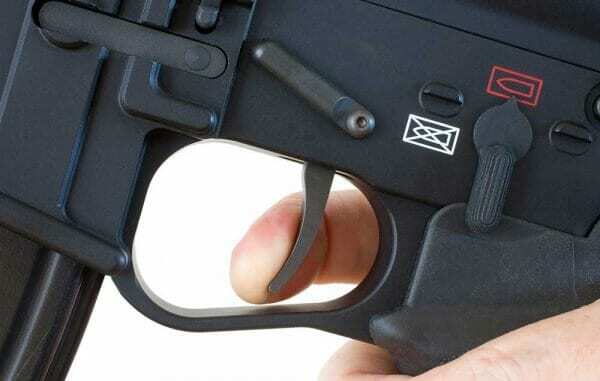 Trigger control
Trigger control
The goal of good trigger control is to produce a movement in the trigger which overcomes the tipping point without inducing any secondary motion in the aiming point. By using slow-twitch muscles, the action is smoother and therefore more predictable. The approximate timing of the shot should coincide with the lull in breathing but should surprise you. The placement of the finger on the trigger is generally best positioned with the center of the pad of the first finger joint on the trigger because the mechanics of the hand produces less sideways motion if done so. Jerking and slapping are less accurate.
Breathing control
Mastering the ability to control one’s breathing is crucial to accurate shooting; the changing shape and position of the shooter’s chest when breathing causes the gun to move in relation to the perceived aiming point. The time lag between the position of the gun and perception of motion by the human mind causes the true bore aim direction to differ from the perceived point of aim. Instead, there is a cone of probability that covers the extent of the motion. By perfecting the skill of holding your breath so the shot leaves during a period of non-chest-motion, the cone of probability is decreased in size, and accuracy increases.
Heart rate
Just like breathing, each heartbeat changes the shape and position of the chest. This inherently affects the aiming point. To maximize accuracy, the goal is to reduce your heart rate to the base minimum and to squeeze the trigger such that the shot surprises you between beats.
Shooting stance
There are many positions to shoot from. The most accurate position is one which gives the greatest stability possible, such as the prone or bench rest position. Medium accuracy stances would include at least three points of contact, such as sitting with the forestock steadied on a knee. The least accurate is unsupported shooting from a standing position.
In shooting moving targets, the shouldering position of the gun should be natural and repeatable in order to tune the muscle reflex with the eye and point of aim. Engaging rapidly moving targets while cross-panning can cause the gun to shift positions on the shoulder which increases the risk of pain and injury and decreases accuracy.
Fit of the gun
Length of pull is the distance from the center of the trigger contact surface to the surface of the recoil buttstock. The ideal fit for the length of pull can also be measured with your shooting arm bent at 90 degrees with your trigger finger in a natural trigger pulling configuration. A measurement is taken from the first joint of the shooting finger to the crook of your elbow. 13-3/4 is the standard length of pull for guns manufactured in the USA.
Myself, I am 6’-3” tall and my length of pull is 14-1/2”. A well-fitted gun and a FalconStrike are the two biggest performance-enhancing features available. Get both.
Rate of fire
Rate of fire affects accuracy. The shorter the time available to compose the ideal shot, the more the cone of probability will increase. Rapid semi-auto or full-auto cycling will have so much recoil energy transmitted to the shooter that the muscular effort required to maintain the line of sight will increase the cone of probability.
Shots per session
The number of shots fired in any given shooting activity defines when it goes from being fun to being painful. Reaching the point of refusal, or worse, risking the development of flinching is dependent on many factors, but the biggest contributor is total recoil energy absorbed by the shooter in any one session.
In Summary
Having analyzed all of the aspects listed above of both the gun’s behavior and of the human’s shortcomings, the single largest gain in comfort and confidence available is the FalconStrike hydraulic recoil energy converter.
Apart from a well-fitted gun, eliminating recoil energy before it reaches the shooter is the single largest gain available in order to advance in proficiency, and here’s why:
- By substantially increasing comfort and reducing the recoil energy transmitted to the shooter, the stun point is avoided, fear and anticipation eliminated, sensory input leading to the point of refusal is reduced leading to more enjoyment and time shooting, and most importantly, the cone of probability is reduced leading to greater consistency and accuracy.
- Mechanically, the FalconStrike installs easily with 2 screws on the butt of your gun, but will reduce energy transmitted to you by as much as a muzzle brake. FalconStrike is equally suited to increase comfort and confidence on shotguns or rifles. The revolutionary level of energy reduction and increase in comfort is akin to shooting two calibers smaller.
- In addition to permitting you to master the human factors, the single largest modification to any gun platform performance available is the FalconStrike. By maximizing the comfort of the recoil event and minimizing the energy transmitted, you will enjoy more time shooting, attain new levels of performance and enjoy the thrill of shooting like never before.
The increase in performance is summarized by these three successive improvements in human technology: Pointy sticks, Gunpowder, FalconStrike
It would be fair to warn you, you will go through more boxes of ammo.
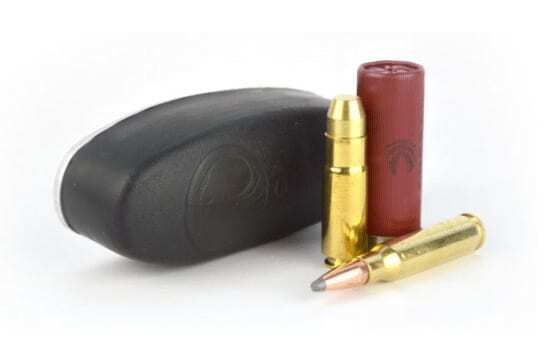
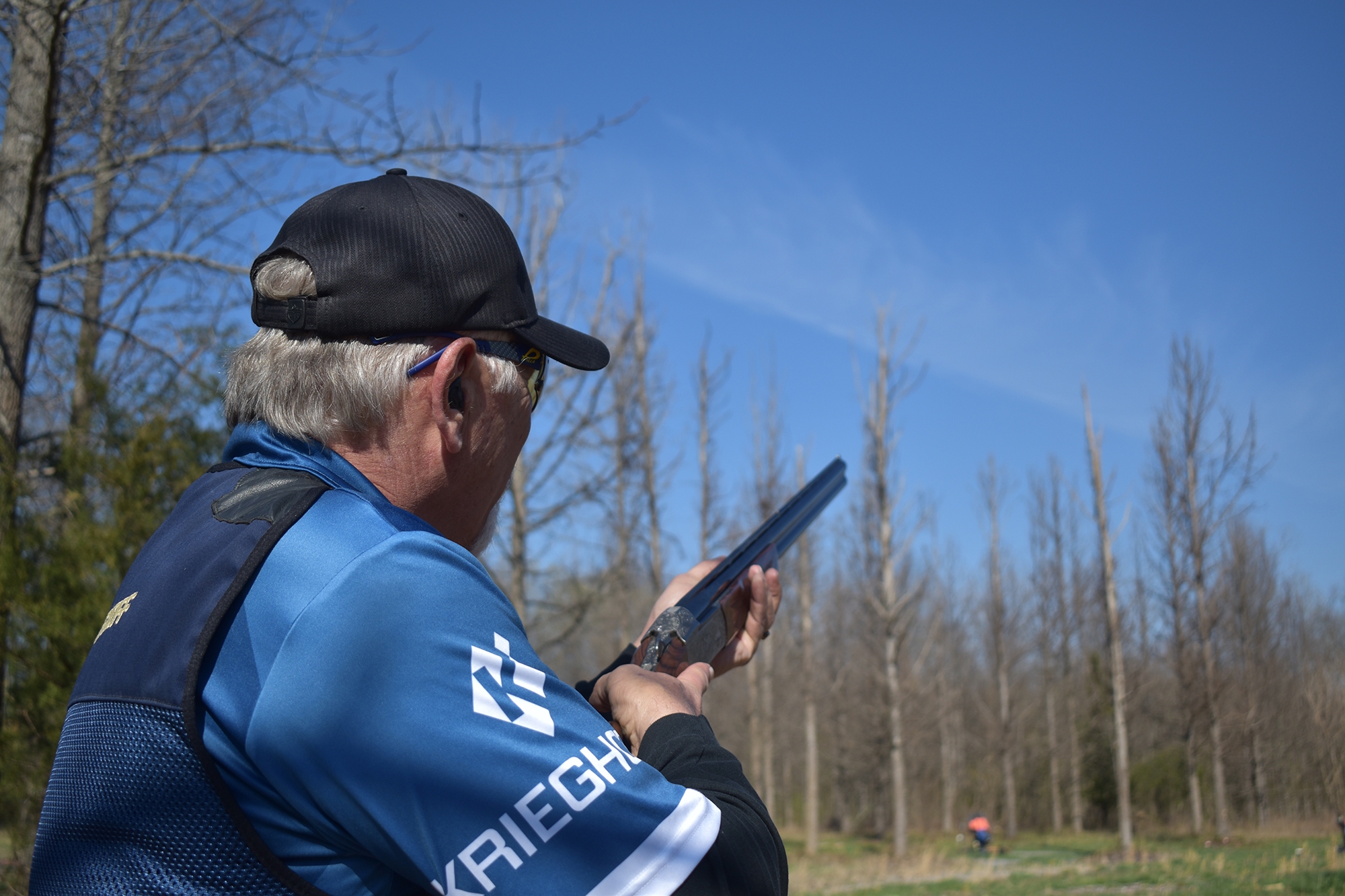
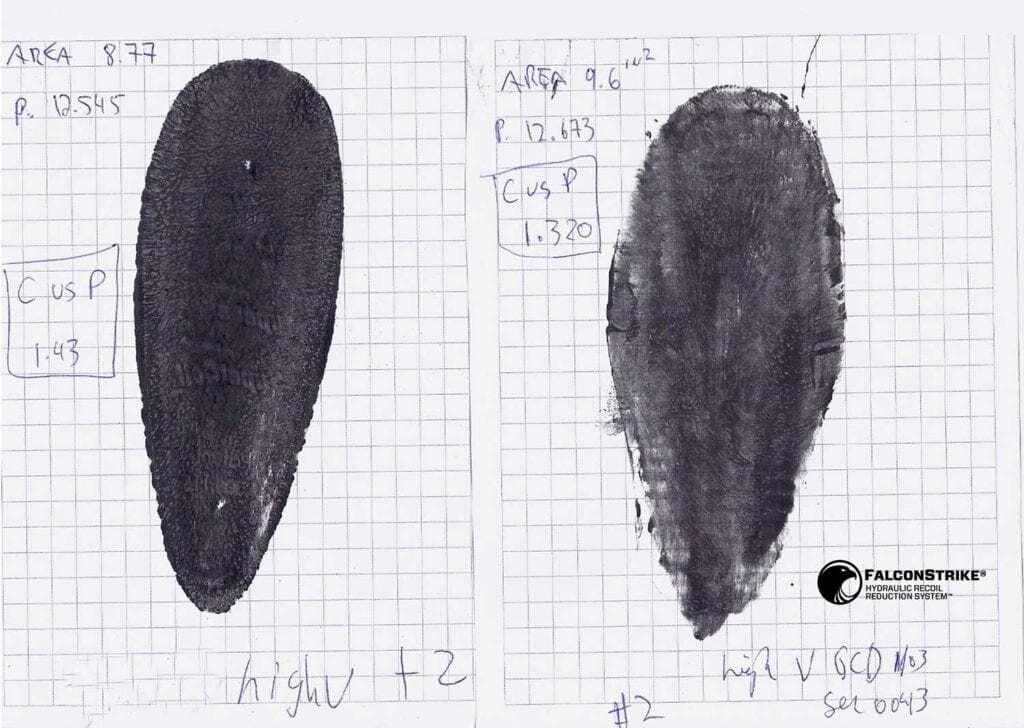 How FalconStrike’s Hydraulic Technology Works
How FalconStrike’s Hydraulic Technology Works The Benefits of Hydraulic Recoil Pads
The Benefits of Hydraulic Recoil Pads
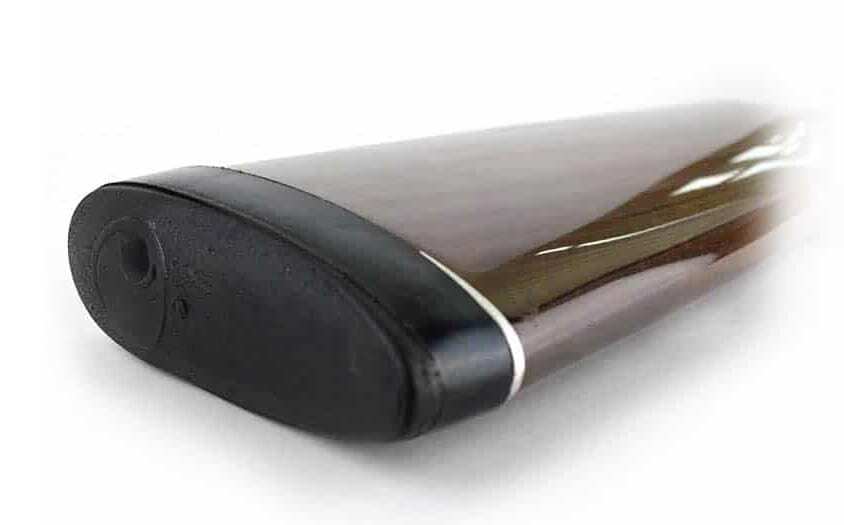

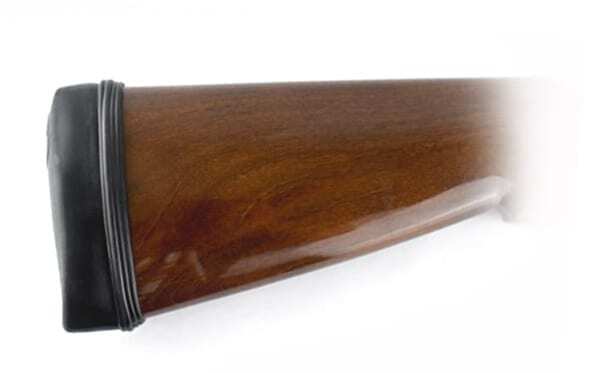
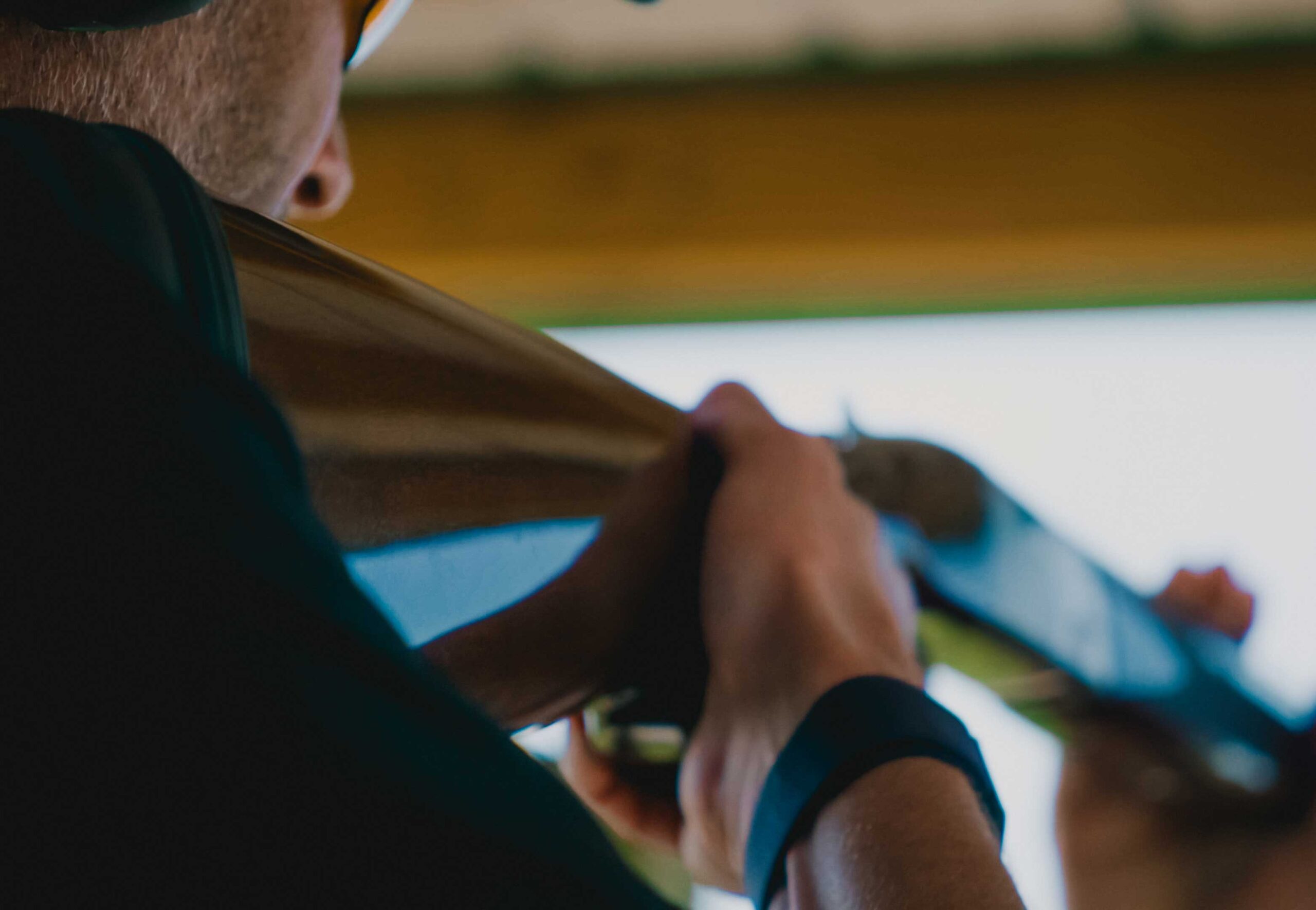

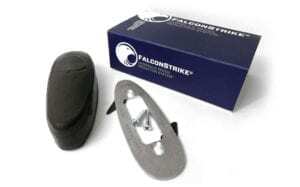
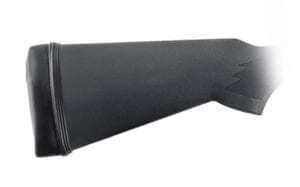
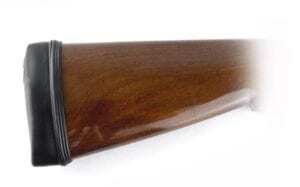
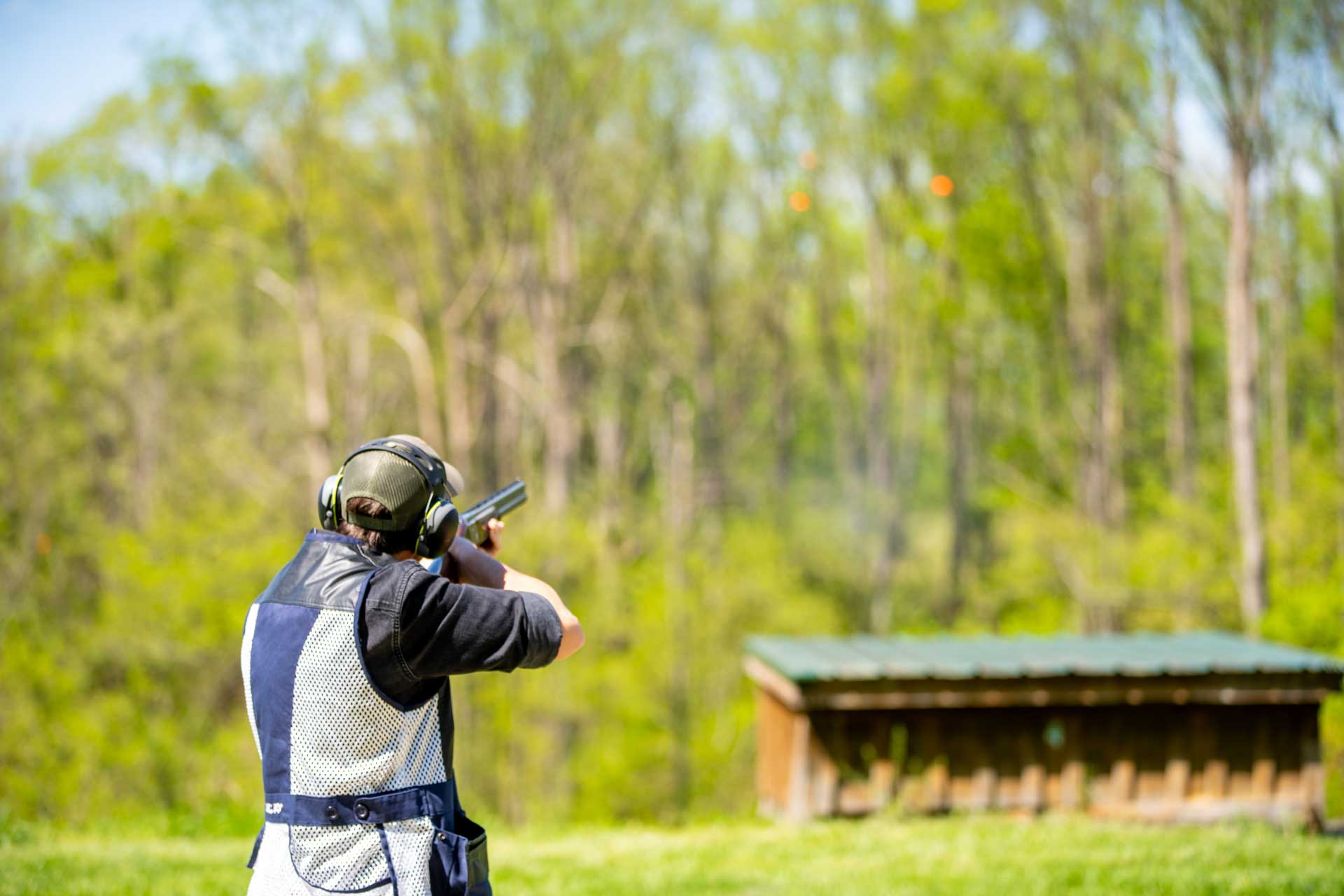
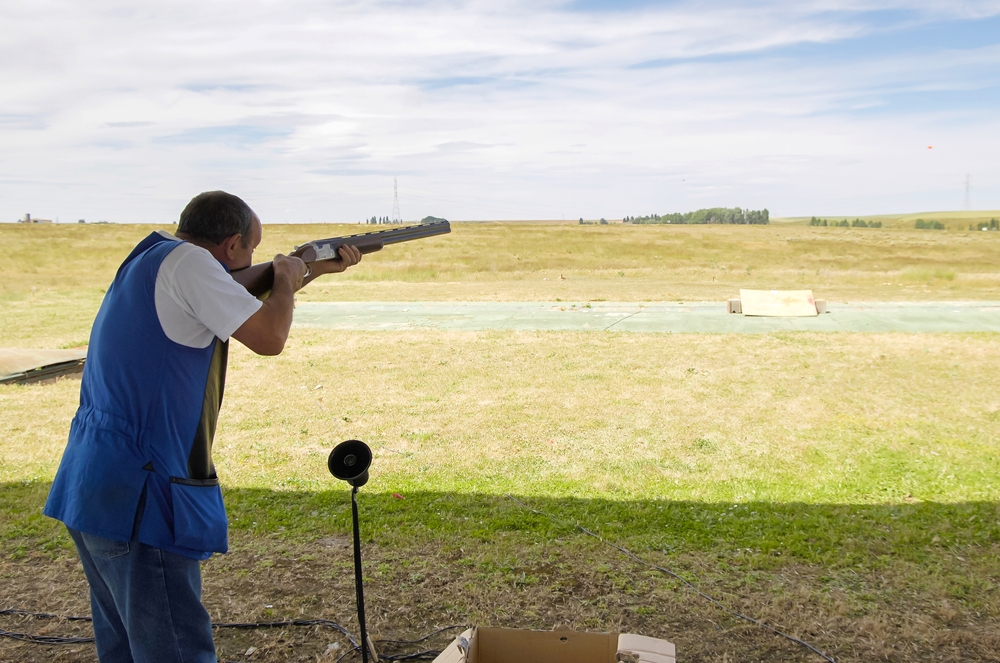
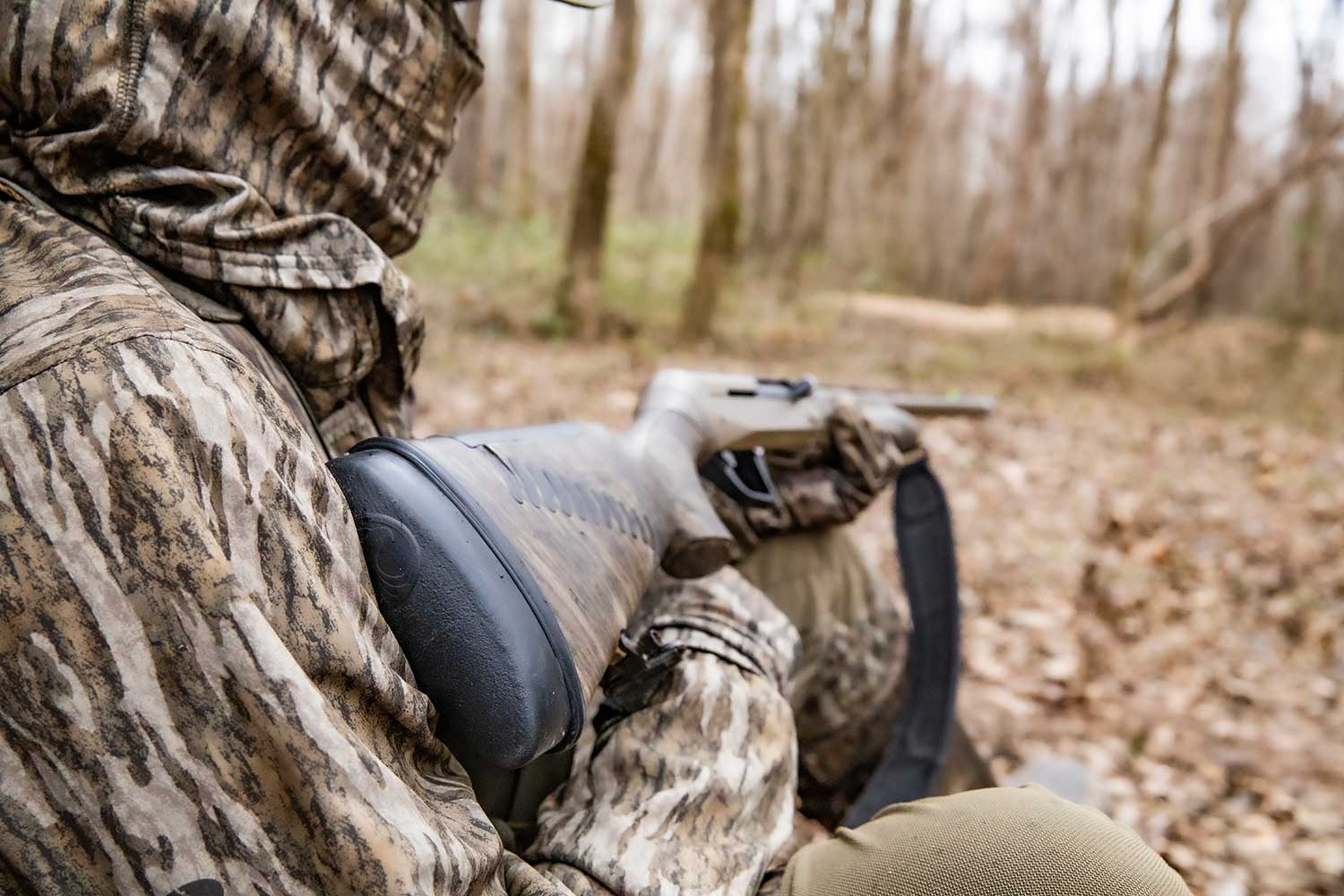
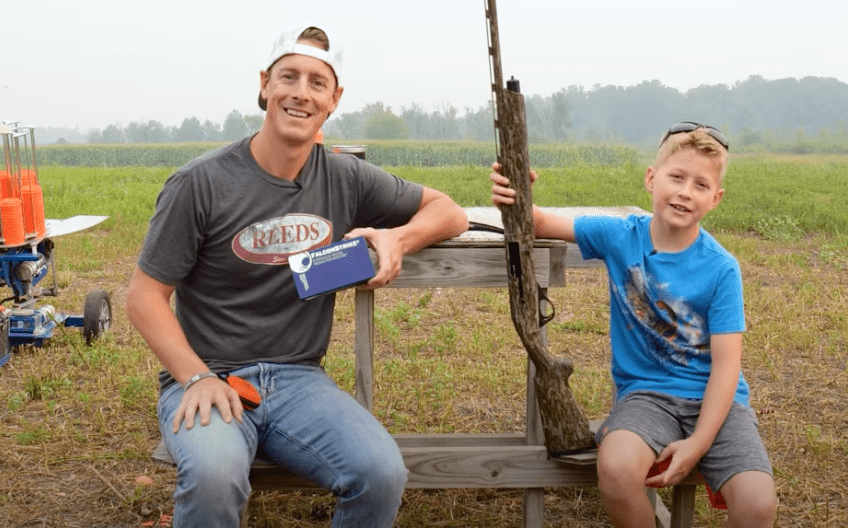
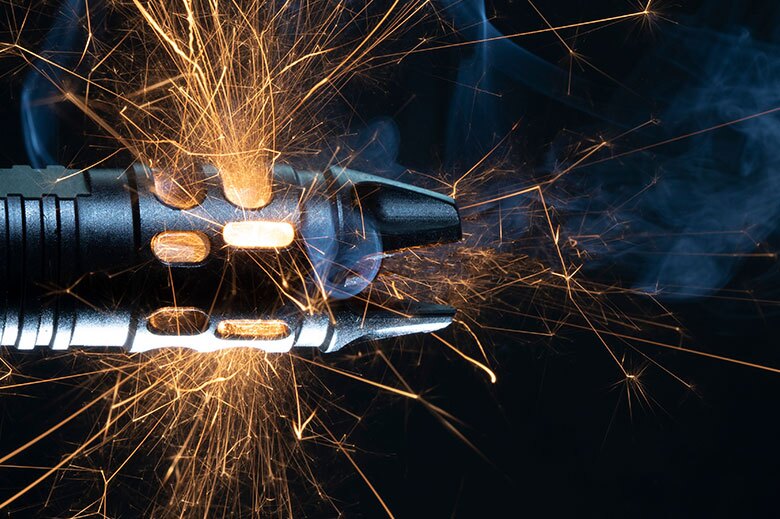
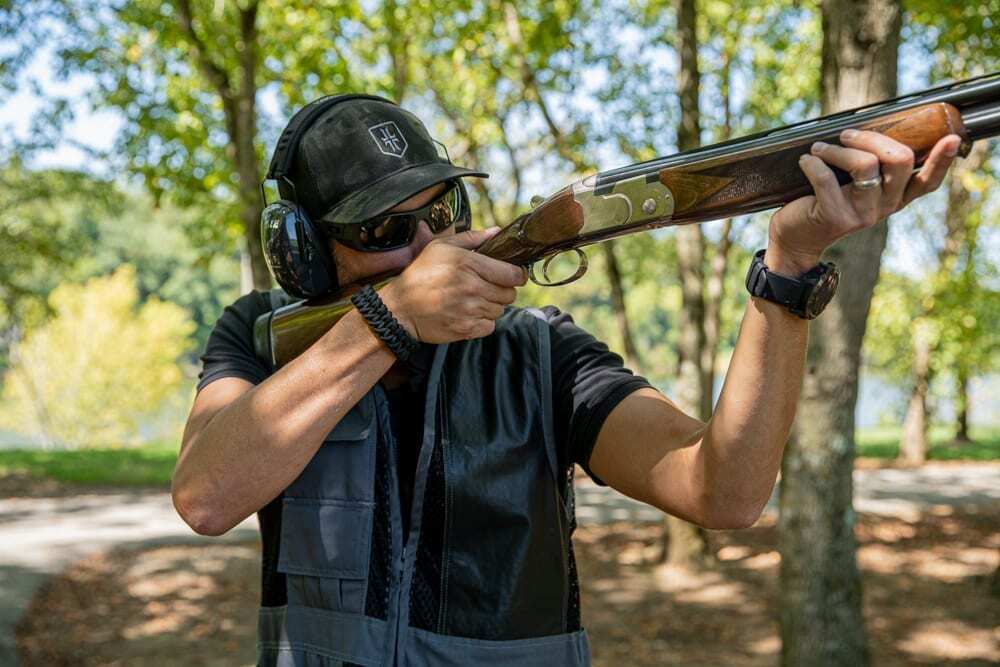

 Muzzle porting or muzzle brakes
Muzzle porting or muzzle brakes Butt plate pads
Butt plate pads The burning rate of the propellant
The burning rate of the propellant 



 Trigger control
Trigger control


